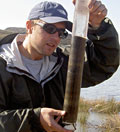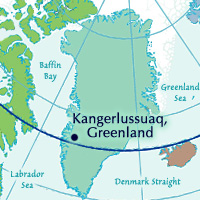Limno Toolkit
KANGERLUSSUAQ, GREENLAND– Limnology is the study of freshwater systems, like lakes.
We’ve been doing modern limnological sampling to better understand why the haptophyte algae (the producers of biological thermometers) fare so well in our Greenlandic study lakes… it’s still a mystery.
We sit on a rubber boat (a Zodiac) making measurements and taking different kinds of samples. Have a look at this video to see us recover sediment samples from last season, and get introduced to some of the equipment we use to sample water, algae and sediment.
Get the Flash Player to see this player.











Informative! Entertaining! Brilliant! It’s wonderful seeing you work and I think your production values are excellent. And the music is awesome. Science with a sense of humor–at long last ; )
Is Haptophyte the only algae that has these natural thermometers or do other algae have them? Also I saw in your video that you were collecting sediment as an important part of your data. Is the Haptophyte algae layered in between the sediment, and the deeper you go the older the Haptophyte algae is? (A little like dinosaur fossils)
Hi Liz,
Great questions! The only organisms on the planet known to make alkenones are members of the class of algae Haptophyta. To make things even more confusing, not all members of the Haptophyta produce alkenones!
The algae grow in the water of the lake, but when they die they settle out onto the lake floor where their cells, including their alkenones and their DNA (two of the things we’ve been looking for), get piled up over time like a layer cake. Take a look at my dispatch called “Coring in Greenland & NYC” for an example of how we obtain long core records from the bottoms of lakes. Your analogy to dinosaur fossils is right on… the deeper in the lake sediment you go, the older the material you find and you can use it to reconstruct the environmental and climate history of the region.
Thanks for the questions!
Thank you for your answer! This is VERY cool stuff!